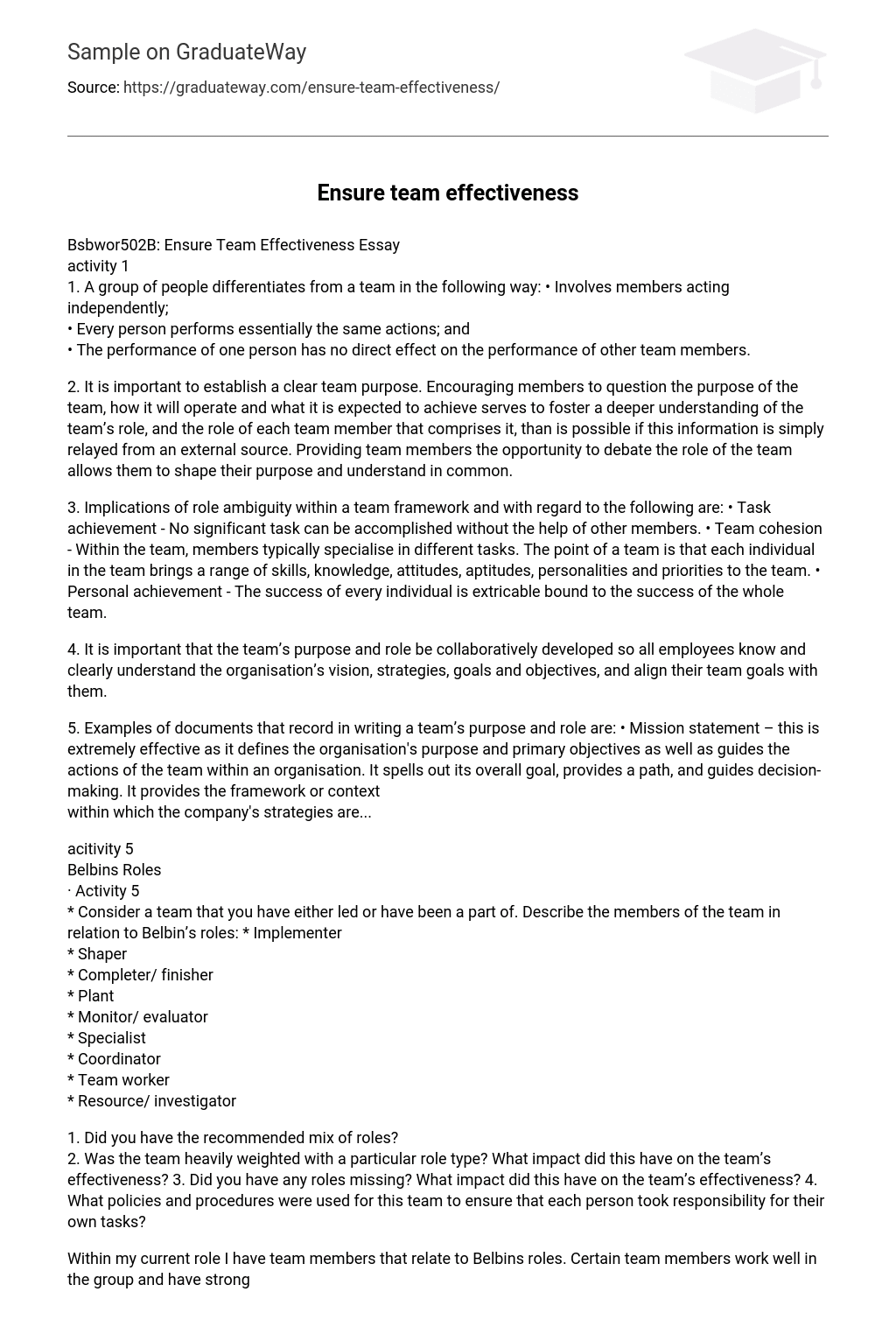Having a clear team purpose is vital because it enables team members to question the team’s purpose, operations, and expected achievements. This not only promotes a deeper understanding of the team’s role but also helps each individual understand their specific role within the team. Instead of just receiving information from an external source, encouraging team members to discuss the team’s role allows them to shape their purpose and establish a shared understanding.
The implications of role ambiguity within a team framework and with regard to the following are:
- Task achievement – No significant task can be accomplished without the help of other members.
- Team cohesion – Within the team, members typically specialise in different tasks. The point of a team is that each individual in the team brings a range of skills, knowledge, attitudes, aptitudes, personalities and priorities to the team.
- Personal achievement – The success of every individual is extricable bound to the success of the whole team.
It is crucial to create the team’s purpose and role in a collaborative manner, ensuring that all employees have a clear understanding of the organization’s vision, strategies, goals, and objectives, and align their team goals accordingly. Examples of written documents that outline a team’s purpose and role include:
- Mission statement – This is highly effective as it defines the organization’s purpose and primary objectives, guiding the team’s actions within the organization. It articulates the overall goal, provides direction, and aids decision-making. It establishes the framework or context.
Within my current role, I have team members who embody various Belbin roles. Some team members excel at working collaboratively and contributing creative ideas and suggestions. Others are more reserved and are content with taking direction and following their own approach to completing tasks. There are also team members who possess extensive experience and can offer valuable guidance and expertise (specialists). As the overseer of the team, I am responsible for providing direction and support (co-coordinator).
Overall, I believe the team had a good mix of roles, with members contributing different ideas and suggestions, as well as taking on different responsibilities. This helped to maintain a balance in the team’s dynamics. However, there were moments when the team had too many members who struggled to come up with initial ideas, which caused some problems. Only when the right balance was achieved did the team start to function better. Having too many people focused on generating ideas meant that the good ones were overshadowed by bad ones, and we wasted time and resources in certain areas. Initially, the team lacked a strong “shaper”.





